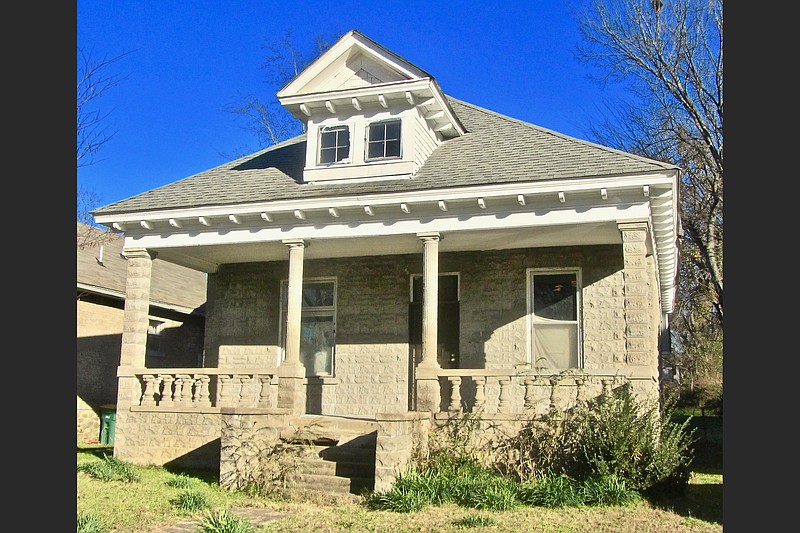One of Little Rock’s little known historic districts is serenaded daily by the rumble of traffic curving along the busy ramps that connect Interstate 30 and Interstate 630 southeast of downtown.
Hanger Hill Historic District extends along a single block of Welch Street, between 15th and 16th streets. Its buildings are single-family houses, constructed between 1906 and 1925. They were at risk of demolition under public domain when the interstates cut through nearby neighborhoods. Most owners have taken care to preserve them in recent decades.
Listed on the National Register of Historic Places as one of Little Rock’s 22 National Historic Districts, Hanger Hill “represents the post-Victorian heyday of concrete block construction,” according to the Encyclopedia of Arkansas History & Culture.
It also marks “the transition from the Queen Anne architectural style to the Craftsman style in a primarily working-class neighborhood.” About half the houses are built of concrete blocks, an unusual cluster of such construction in Arkansas. Some porches are supported by concrete pillars, replaced in a few cases by wooden supports.
The variety of designs in a single block denotes the diversity of domestic architecture in the early 20th century. As the National Register website notes, “the most obvious trend was a transition from the colorful and eclectic Queen Anne style toward the more reserved and classic lines of Colonial Revival,” as shown in Hanger Hill.
The district’s name is derived from Peter Hanger, a civic leader who subdivided land next to his home in 1869 as Little Rock was beginning to recover from the tumult of the Civil War. Adjoining his property was the larger Masonic Addition, now mostly swallowed up by the interstates.
Builder of the Hanger Hill properties was Leifer Manufacturing Co. The 1907 Little Rock City Directory contains an advertisement by the firm showing a photograph of the house at 1500 Welch St.
Hanger Hill construction came at a time when residential development east of downtown had slowed in favor of home construction to the west. The Arkansas encyclopedia reports that “much of this growth can be attributed to the creation of the streetcar, the organizers of which owned a large amount of land west of the city. Consequently, streetcar tracks hardly touched the eastern edge of the city.”
Detailed information on Hanger Hill and Little Rock’s 21 other National Historic districts can be found at arkansaspreservation.com. Some are well known, the likes of Hillcrest, Arkansas Territorial Restoration, MacArthur Park, Capitol View and Governor’s Mansion.
Others are relatively unfamiliar. Like Hanger Hill, they can be targets for urban explorers who’d like to learn a bit more about Arkansas’ capital and largest city.
